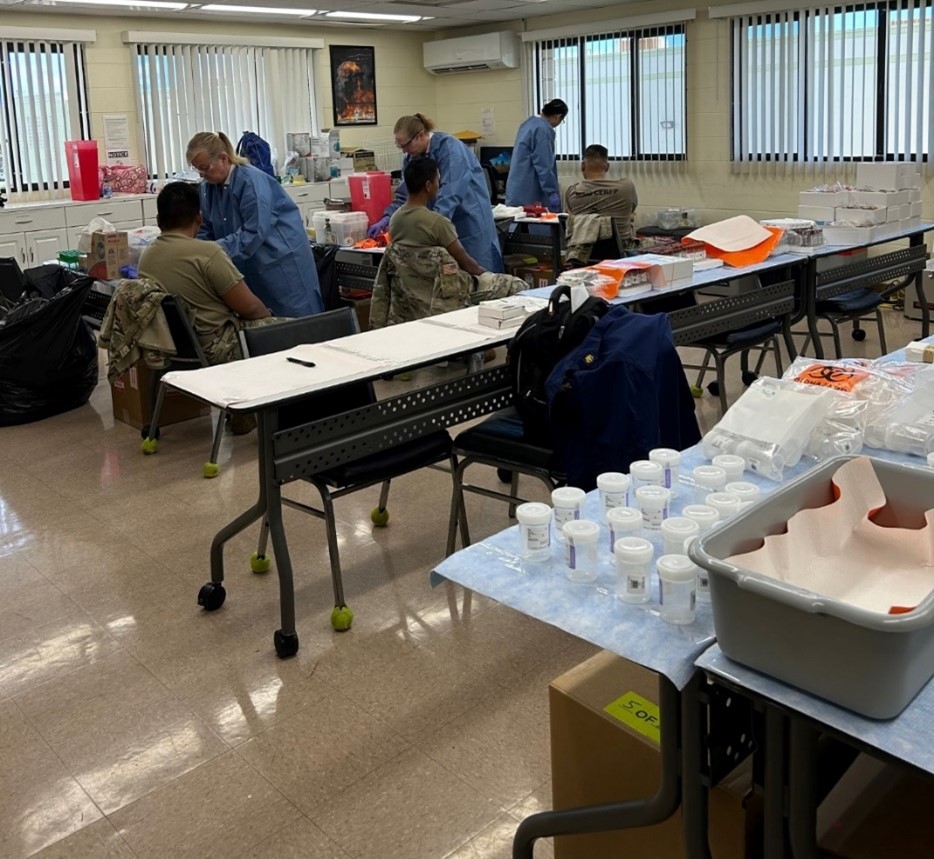Worried About Lead in Your Workplace?
Posted on by
Our goal in public health is to keep people safe from the hazards around them including in the workplace. If you are worried about lead or other possible hazards in your worksite, there is something you can do about it.
There’s a program for that
 The National Institute for Occupational Safety and Health’s Health Hazard Evaluation Program was created to alleviate and address these kinds of concerns. The program helps employees, unions, and employers recognize and control health hazards in their workplace.
The National Institute for Occupational Safety and Health’s Health Hazard Evaluation Program was created to alleviate and address these kinds of concerns. The program helps employees, unions, and employers recognize and control health hazards in their workplace.
In the spirit of National Lead Poisoning Prevention Week, we’d like to highlight three recent Health Hazard Evaluations (HHEs) that assessed lead in the workplace. Lead exposure can cause infertility, cancer, death, and other conditions. However, once we know how workers are being exposed to lead, we can make recommendations for how to keep workers safe from exposure.
Lead was a hazard of concern among the following three HHEs:

NIOSH received requests from Maui County and the Hawai‘i National Guard to evaluate first responders’ possible chemical and metal exposures during the 2023 Maui Wildfires. Houses on the island built before 1978 may have used lead-based paint. Solder and old galvanized pipes in houses may have also contained lead. And not just older items, newer additions to our lives such as electronics and electric vehicles contain lead as well. Because of this, it was possible that lead could be a contaminant in ash from the wildfires.
Among those who responded to the Lahaina and Kula wildfires, there was concern for:
- Maui County firefighters
- Police
- Ocean Safety Officers
- Other Maui County employees
- Hawai‘i National Guard servicemembers
Although the Kula and Lahaina ash samples showed high levels of lead, the first responders we sampled had relatively low blood lead levels. However, our team did identify other chemicals of concern.
2. Exposure to Lead During Residential Water Line Replacement (2021)
An employer representative from a city water department submitted an HHE request to evaluate exposure concerns among crews replacing leaded water lines. This occurred after two employees received blood tests indicating elevated blood lead levels. While the blood samples taken by HHE investigators did not identify other workers with elevated blood lead levels, further testing found lead present on employee hands, work gloves, and work surfaces. Learn more about this investigation.
3. Exposures at an Electronics Recycling Company (2018)
An electronics recycling company was concerned about their workers being exposed to metals and flame-retardant chemical compounds. NIOSH found metals in the air samples and on surfaces outside of the processing area. Three employees had elevated blood lead levels. We also found flame retardants in the air, on employees’ hands, in their blood, and in their urine.

We offered several recommendations. A few were to:
- Provide employees lead-removing products to wash their hands. Soap and water are not enough.
- Provide employees onsite laundering facilities or contract with a laundering service for all employees exposed to lead or other metals.
Learn more about this investigation.
Use the HHE program to assess hazards in your workplace
If you are currently an employer, employee, or union official and think there are possible health hazards at the workplace, you can request an HHE. Employee requests can remain confidential. HHEs are done at no cost to employees, employers, or union.
What happens after you submit a request
When an HHE request is submitted, a health and safety professional (industrial hygienist, medical officer, epidemiologist, etc.) will contact the requestors to learn more. From the information provided, our team will decide how the HHE program can best assist.
Letter with recommendations
For common types of hazards such as mold and indoor environmental quality, an on-site evaluation may not be needed. If this happens to be the case, our team will review information from all involved parties (employer, employees, employee representatives, etc.) which may include reports about exposures, illness, and injuries. We will then recommend ways to reduce employee’s exposures and prevent work-related health problems. We may also suggest other resources.
Site visit with final report
If we decide an on-site evaluation is needed, our team will come to the workplace at an agreed upon time. The process may involve:
- Observing work processes and practices
- Reviewing reports of exposure, injury, and illness
- Meeting with employee and employer representatives
- Talking privately with employees about their health
- Measuring exposures
- Surveying employees about their health
- Carrying out medical testing (if needed)
On-site evaluations may need more than one visit. We will work to minimize disruptions to workplace activities while assuring that the request has been fully addressed.
Throughout the evaluation, we will keep all parties informed on the HHE activities. The HHE program will send employees the results of their own exposure measurements and medical tests done during the evaluation. The employer gets a summary of these results (no employee names are used) and guidance on improving health and safety in the workplace.
For these on-site evaluations, we post the final report (without company or employee names) to our program webpage and send the report to other federal and state agencies that are involved in safety and health at workplaces. We also have a follow-back program to get feedback from employers and employees. After an HHE is complete, we may ask about the HHE, how recommendations were implemented, and how we can improve.
Amy Mobley, MEn, is a Health Communications Specialist in NIOSH’s Health Informatics Branch in the Division of Field Studies and Engineering.
James Couch, PhD, CIH, is Chief of the NIOSH Hazard Evaluation and Technical Assistance Branch in the Division of Field Studies and Engineering.
Posted on by

